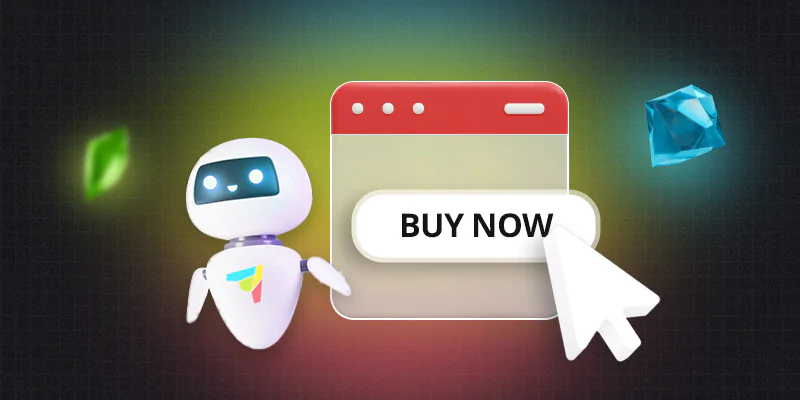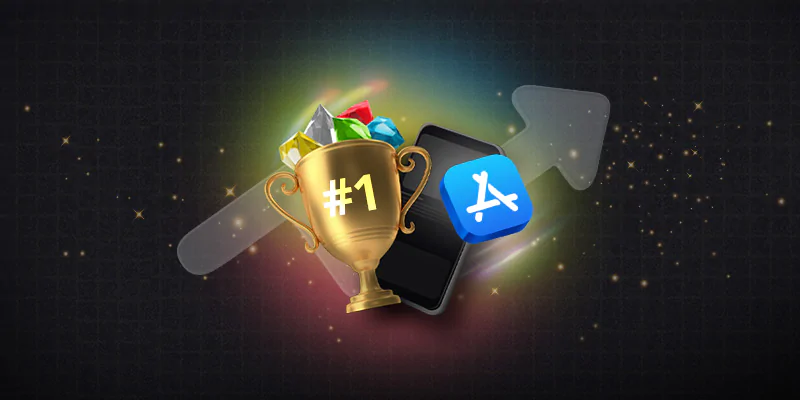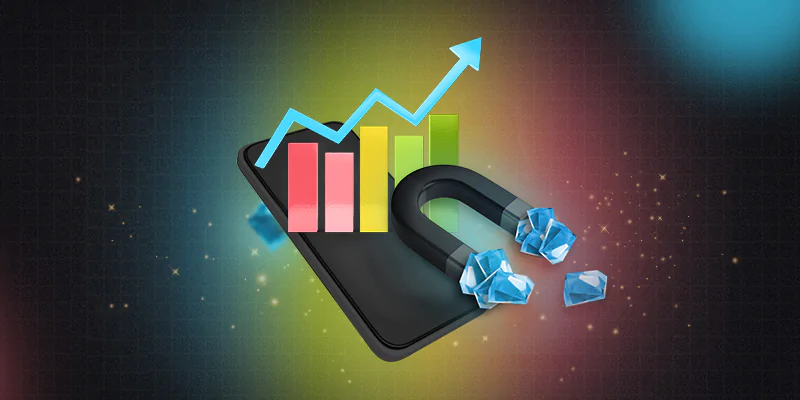10 Tips for Your Push Notifications Strategy

There’s a lot of talk about the best way to acquire users, but equally important is how to retain those users. The key to app success is loyal users, as people who use it once and never return won’t bring you much value. When building a smart retention strategy, push notifications are your friend. It’s reported that push notifications increase retention rates by 180%, meaning they’re a tool you cannot ignore. Push notifications provide the perfect opportunity to communicate with your users in a personalized and effective way.
Alongside all of the positives regarding push notifications, there are also some concerns among industry professionals. As with any form of notifications, there’s always a risk of annoying your users or, worse, being perceived as intrusive. However, this is no reason to ignore push notifications altogether. It simply means that you have to be clever when creating your push notification strategy. If you follow all of our tips below, we promise you’ll be on your way to increased retention and re-engagement.
What are Push Notifications?
Push notifications are messages that are sent to users’ devices from an app they have installed, and they appear on both the lock screen and notification centre. Users must give the app permission to send push notifications. The app doesn’t need any further information about the user beyond that they have their app installed and push notifications enabled, meaning they’re a great way of reaching out to dormant users. You can read more about them on The Next Web too.
1. Ask for Permission
Particularly in recent years, there is increasing reluctance to accept requests for anything in the mobile sphere that may be considered invasive. It could be the recent ATT Framework request for IDFA access, or permission to send push notifications. Privacy is now at the forefront of the app industry, and users are more conscious of what they allow on their devices than ever before. With regulations such as GDPR and the ATT Framework coming into play in the last five years, asking for permission has never been more important. The moral of the story is that you absolutely cannot send push notifications unless users first give you permission.
But how do you get users to opt-in?
- Communicate your value
- Identify what is relevant to users and target them with these, e.g. sales or feature updates
- Identify where and when each user engages with your app and target them there
iOS has an official opt-in message that you can’t customize, but you can customize your own splash screen. Don’t waste this opportunity to get personal and put your best foot forward to get users to opt in. As mentioned above, communicate clearly and give them an answer to their why. The official opt-in prompt doesn’t need to come until after, when you’ve already won them over. It’s possible to show the splash screen again later if the user responds negatively, but always be wary of annoying the user beyond the point of return when doing so.
2. Create A Push Notification Strategy
Why would you risk all of your hard work going down the drain when you can create a foolproof strategy instead? In the mobile world, it’s simply unnecessary to make any decision without using the available data to back it up. It’s there to be used to your advantage, after all. Use this data to strategize and watch your performance climb.
When building your push notification strategy, you need to define:
- What are the user behaviour types you want to target?
- What are the various push triggers you want to adopt?
- What goal do you want to achieve with each push notification?
- And much more.
Focus on more meaningful triggers to get the best response rate from users. You’ll be getting your results in real-time, meaning you have to be quick to adapt. A strategy is an ongoing process.
A popular push notification strategy is to inform users of your latest app updates. This brings value to the user with information on your new features that they may have missed otherwise. Highlight the benefits of your new features so they know why you’re sending the message and to keep them coming back to your app.
Another example of a great push notification strategy is to use limited-time offers to your advantage. They’re a great prompt for users who need a little nudge. If you know what they’ll find valuable, offer it to them at a reduced price or with an added incentive to get them to commit to the purchase or action. This isn’t something to over-use, though, and should be offered in small doses to keep them exclusive and maintain their value. The more you do this, the less valuable they become. A limited-time offer could be anything from a flash sale to a free in-app purchase that day only, depending on your app vertical.
3. Push Types
Using current technology, you can include rich media in your push notifications, so don’t forget to incorporate images to elevate your text. The more interactive your messages are, with a strong call-to-action, the more likely you are to get users’ attention.
If you’ve got a social app, you can increase engagement using interactive push notifications, for example informing them when their friends have done something in the app. Send them a notification that lets them know of their friend’s action, encouraging them to follow up with a like or comment. Using the interactive notification directly elevates the value of your push notification and increases engagement. As an example, Instagram often sends push notifications to say “@…posted for the first time in a while”, or Facebook will send a push notification to say “[…] and 15 others recently liked this post”.
4. Get Your Timing Right
Timing is key with everything in the mobile marketing funnel, but particularly push notifications. It makes a significant difference here, where you can either bring value to users or annoy them. Our number one tip is to ensure you don’t send a push when users are asleep or likely busy, otherwise it’s not going to lead to the engagement you’ll be hoping for. You need to identify your target audience and their user habits to know when is the best time to send them a push, and what to write in it.
Generally speaking, the afternoon is the best time to send push notifications. However, as touched upon above, it will always vary depending on what you want to achieve, who your audience is, where they are and your industry vertical. You need a full understanding of your user’s buying journey, and which parts of the app resonate best with them so are likely to reap the best rewards when placing a push there. There’s no point placing push notifications on the lower traffic parts of your app.
Also, the “afternoon” looks different for all of your users depending on where they are in the world. You can geo-target them and send out the messages according to their time zone.
5. Don’t Forget A/B Testing
A/B testing is a concept that should be applied to nearly everything in the mobile marketing funnel. It allows you to base your decisions on data, which is invaluable to ensuring success. Everything mentioned on this list should be tried and tested and the best options should be selected through A/B testing. As always, your results should be measured so you know which concepts to keep. Like many others, this is an ongoing process.
We recommend testing various sales options on a number of different user segments before a specific season or deal you have coming up. You can experiment with the content, timing, tone, etc. Whatever your users respond best to, continue with.
6. Choose Your Content Carefully
Push notifications should always be used to drive a specific result. That means they should be to the point, no excess text, and have a solid call to action. Beyond that, you can consider humor and an engaging tone. Most important of all is personalization – you absolutely must be sending a personal message to each user segment to get them on board. This can increase the open rate by four times.
We recommend approaching users with their name and details of the last actions they performed in your app. If you sell a product and a user has displayed interest in a specific item, let them know when it goes on sale. It’s also wise to be wary and don’t get too personal to the point of being intrusive.
7. Segmentation is Important
A personalized push notification strategy is where it’s at. Segmentation is the process of building different content strategies for different types of users. It involves dividing your audience into various groups, which can be based on their location, gender, interests, age, user behavior and so much more. The goals you defined to begin with come into play here, as they should directly correlate with how users interact with your app and how much they interact with it.
To start with, your targeting for dormant users should be different than that for engaged users. The aim of the game is to grab the attention of dormant users to transform them into active users, and a great way to do this is via special deals in push notification form. Remind them why they downloaded your app in the first place.
8. Frequency: How Often Should You Send Push Notifications?
Sending too many notifications in one day, or even one week, can easily frustrate users and bring an unintentionally negative result. It can be hard to strike the perfect balance of connecting with users without becoming overly pushy. That’s why we’re here to help.
Our top tips are to divide push notifications into two separate groups. The first group should be alerting users about actions their friends have performed in the app, while the second should refer to the app itself, for example a new feature. Often, you’ll find that the first group resonates better with users, but you still need to watch how often you send them.
9. Prioritization of Messages
We hope you take our advice from the tip above, and don’t send too many notifications at once. This requires prioritization of the most important messages, no matter how many you can think of that would be relevant. There will always be one or two that are the most important.
This works by separating notifications that apply to all users (such as seasonal events) from more specific ones, and opting for the message that will speak to the users’ needs the most. If you need help deciding, creating a seasonal version of your overall strategy is a good option.
10. Creativity is Key
With a push notification, the end goal is to grab the attention of your users. In order to be successful, you should be creative, entertaining and careful. If your product team can work alongside your creative team to develop a unique concept, you’ll see much better results. This collaborative approach works across all areas of mobile marketing, so push notifications are no different. Your overall branding should remain the same in your push notifications, so don’t start using a tone or language that you wouldn’t elsewhere.
There are countless options, such as rhyming content, comedic jokes, tapping into popular culture, recent events, or social media trends. You can be as creative as you want within the realms of your brand.
If you need help with your push notification strategy, don’t hesitate to reach out. Our Mobile Marketing Strategy experts are always here to help.











